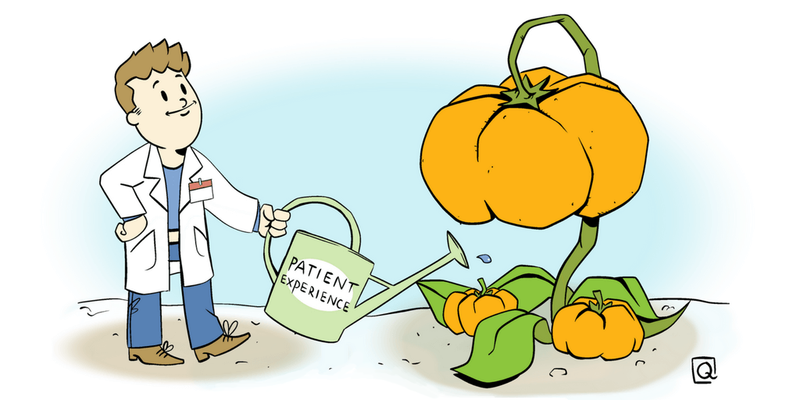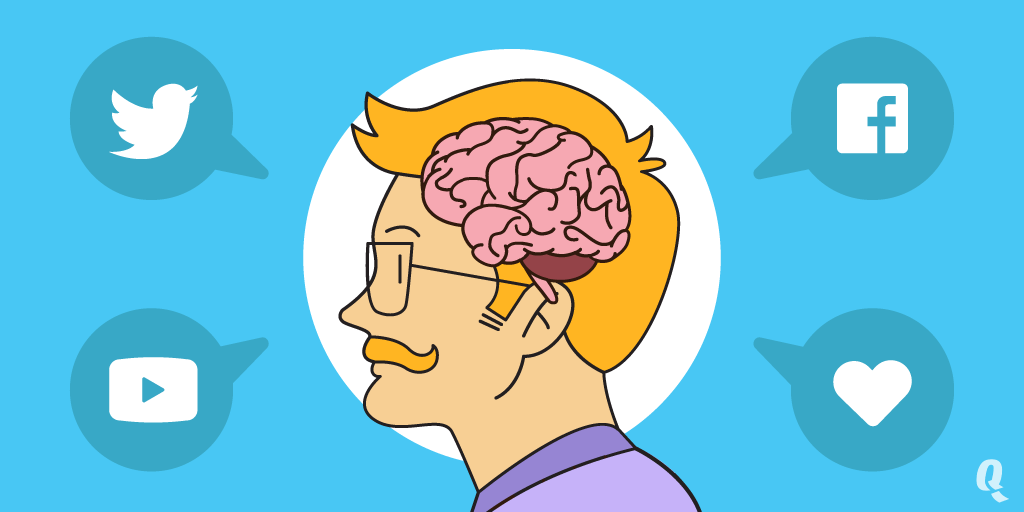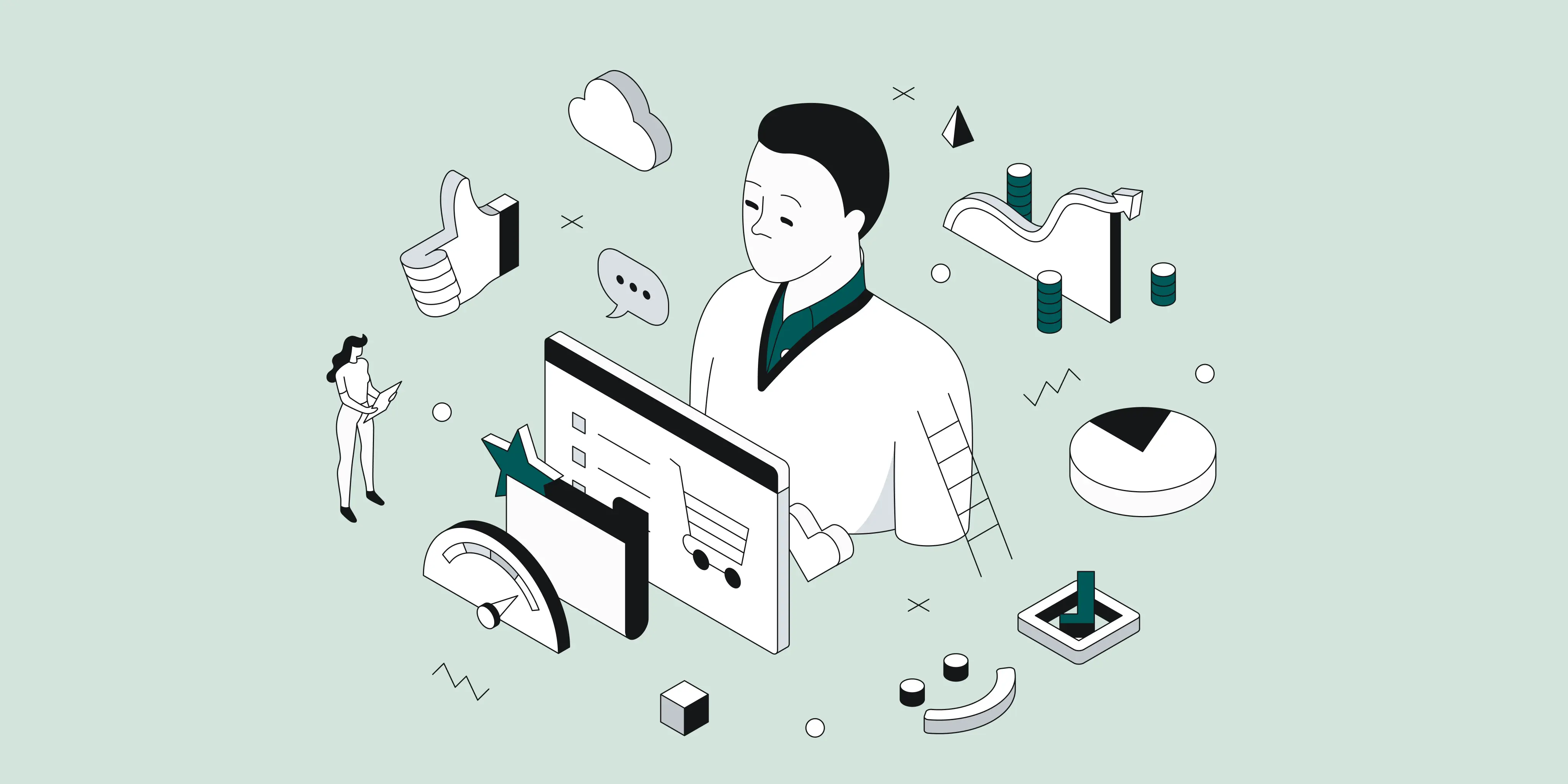When we think about healthcare, we consider it to be different from retail businesses. After all, restaurants and shopping centers aren’t dealing with life-and-death situations.
But in other regards, hospitals and clinics are quite similar to retail businesses. They employ professionals to provide services to their visitors, while having to compete with other facilities doing the same.
How does this comparison help?
Most importantly, it allows you to borrow the best practices of the retail industry, and learn from others’ experiences.
“Experience” being the keyword here.
If there’s one thing to take from retail, it’s the importance of building great customer experience.
Or, in the case of hospitals and clinics, great patient experience.
An Introduction to the Customer Experience Theory
We're not going to go deep into the history of customer experience and expectation management.
Instead, we'll briefly touch on total quality management (TQM), which was first formed thanks to researchers like W. Edwards Deming and Philip B. Crobsy.
In the words of the American Society for Quality:
“Total quality management can be summarized as a management system for a customer-focused organization that involves all employees in continual improvement.”
It’s critical to note that the first of the 8 core principles of TQM is “customer-focused”.
A simple way to think about customer experience in the context of your organization is the customer experience pyramid developed by the research institute Forrester.

From bottom to top, the components are:
Meets needs, which describes how effective the business at satisfying the demands of its customers.
Easy, which stands for how intuitive the services are.
Enjoyable, which refers to the level of emotional engagement between a customer and the business.
Usually, the customer experience pyramid is applied to retail businesses — from brick-and-mortar stores to chain restaurants.
But who says we can’t do the same to healthcare?
Now, before we get to improving patient experience, let’s understand the clear benefits of a good CX in hospitals.
Loyalty — the Link Between Patient Experience and Hospital Revenue
The are several reasons to work on the quality of patient experience, but the main one is that good patient experience boosts patient loyalty.
While the value of customer loyalty for a business cannot be overstated, people tend to forget that “patients” is just another name for customers.
Why does customer loyalty matter?
Different studies estimate that the cost of acquiring a new customer is 7 to 10 times more expensive than retaining an existing one.
The same data can be presented in another way, though. A report by Bain & Company says that increasing customer retention rates by 5% increases profits by 25% to 95%.
Since we’re on the subject of numbers, how do you measure customer loyalty?
Typically, what customer loyalty entails is:
The customer’s willingness to make another purchase.
The customer’s recommendation of a product/service through word of mouth.
Word-of-mouth marketing is especially important, seeing how visitors are twice as likely to share their bad customer experience than a positive one.
The focus on customer service quality is how you build a business that markets itself. As the SDL Global CX Wakeup Call report says:
“If satisfied by the customer experience, 73% of consumers will recommend a brand to others, and 46% say they will trust that brand’s products and services above all others.”
How Can You Measure Patient Experience?

A lot of what you’ve read so far might sound like the stuff you’ve heard before. The positive effects of good customer experience aren’t exactly a well-guarded secret.
The specific steps required to improve patient experience at your hospital depend on the context.
However, if you want to put patient experience at the heart of your organization, it’s important to start measuring patient experience.
In a recent report, McKinsey outlined the following three lessons for healthcare, as taught by other industries.
Linking Patient Satisfaction to Business Outcomes
The importance of patient satisfaction is not to be underestimated — especially when it comes to its effects on hospital revenue.
If you’re asking your patients a set of questions, it’s important to measure whether your performance improved in those areas or not.
Once you know what aspect of patient experience you should improve, you should be able to directly link an improved performance to key business goals.
These key business goals may include the number of patients, effectiveness of customer retention, increased revenue, etc.
Identifying the Strongest Influences on Patient Satisfaction
What do your patients really want? Knowing the answer to this question is crucial to improving patient experience.
Sounds obvious? Take a look at what the McKinsey report has to say:
“Many health systems make large investments to improve the patient experience but fail to achieve their desired objectives because they did not understand what really matters most to their patients. Leading customer-focused companies rarely make this mistake.”
The first place most organizations slip up is not accounting for non-clinical factors. In other words, there are many elements to patient journey.
Things like journey to the hospital and how modern or not your waiting room is, interactions with administrative staff and other patients, etc. As a hospital, you have varying degrees of control over these different elements.
The first step is to find out which parts of this journey have the biggest impact on patient satisfaction.
Through research methods like focus groups and patient satisfaction surveys, you can better align your service strategy with your business objectives.
Uncovering Operational Insights

Finally, it’s not enough to simply know what factors affect patient satisfaction most.
The questions you should be asking is, how can these factors be broken down into components that can be measured regularly?
This is the process of deciding which metrics are the key performance indicator (KPIs) that improve patient experience by changing behavior.
For KPIs to be effective, they need to be quantifiable and clearly defined. Here are some sample metrics you can track in your hospital:
Patient wait time and the average queue length.
Patient room turnover.
Average treatment charge.
The ratio of staff to patients.
The list goes on.
The biggest advantage of this approach is the speed with which you can implement changes in your healthcare organization.
While patient satisfaction surveys are helpful for key insights, it can take weeks to analyze the feedback and design actionable changes.
On the other hand, knowing specific metrics that you need to improve gives you the ability to make real-time changes.
For instance, if empathy is identified as having a strong effect on patient satisfaction, you can track total nursing time spent with each patient.
Changes at this operational level are relatively easier to make, and your hospital can see the results faster.
Automating Data Collection With a Patient Queue Management System

Collecting the appropriate data is a crucial part of optimizing any service — not just hospital service. But getting a large volume of data can be difficult, especially for small-scale operations like a local hospital.
The solution is to implement the right technology.
Queue management in healthcare is the easiest place to start from an operational perspective.
All too often, manual, time-consuming and outdated methods are used for queuing at hospitals. Appointments and sigh-in sheets are ineffective in queue management as they are in data collection.
Using a queue management system dramatically reduces hospital wait time and queue length — key factors influencing patient experience. Not the mention, a QMS also helps speed up the data collection process.
As we've discussed above, there are three steps to measuring patient experience:
Identifying the different steps involved in the patient journey.
Knowing which factors have the most influence on patient satisfaction.
Identifying the right metrics to measure operational improvements in your hospital.
A patient queue management system makes all three steps easier to execute, giving you the power to measure patient experience on a both quantitative and qualitative level.
Bonus: List of 25+ Patient Queue Management Systems
People emphasize the "health" and ignore the "care" aspect of healthcare.
Qminder helps you show your patients how much you care, by providing them with state-of-the-art patient experience.
With a free 14-day Qminder trial, you can plan out your new patient experience strategy, and enjoy the steady influx of satisfied patients.






